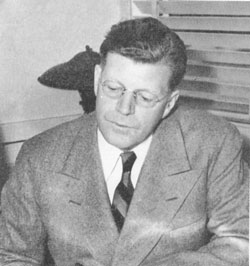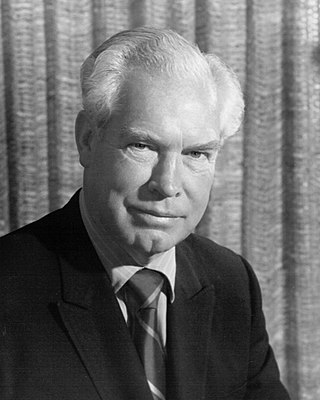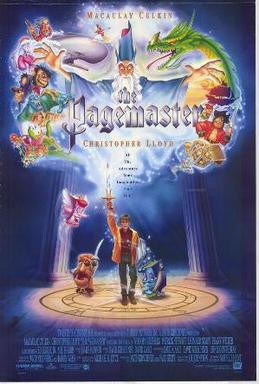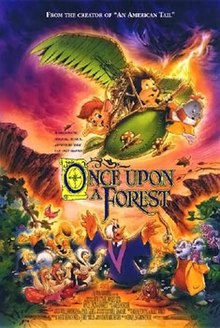
Hanna-Barbera was an American animation studio and production company, which was active from 1957 until its absorption into Warner Bros. Animation in 2001. Founded on July 7, 1957 by Tom and Jerry creators William Hanna and Joseph Barbera, it was headquartered on Cahuenga Blvd from 1960 to 1998, then subsequently at the Sherman Oaks Galleria in Sherman Oaks.

Frederick Clinton Quimby was an American animation producer and journalist best known for producing the Tom and Jerry cartoon series, for which he won seven Academy Awards for Best Animated Short Films. He was the film sales executive in charge of the Metro-Goldwyn-Mayer cartoon studio, which included Tex Avery, Droopy, Butch Dog, Barney Bear, Michael Lah and multiple one-shot cartoons, as well as William Hanna and Joseph Barbera, the creators of Tom and Jerry.
Animation in the United States in the television era was a period in the history of American animation that slowly set in with the decline of theatrical animated shorts and the popularization of television animation that started in the late 1950s, reached its peak during the 1970s, and ended around the mid-1980s. This era is characterized by low budgets, limited animation, an emphasis on television over the theater, and the general perception of cartoons being primarily for children. Due to the perceived cheap production values, poor animation, and mixed critical and commercial reception, the era is generally looked back upon negatively by critics and animation historians. The television animation of this period is often referred to as the dark age of American animation, while the theatrical animation from the time is sometimes referred as the bronze age.
Modern animation in the United States from the late 1980s to the early 2000s is frequently referred to as the renaissance age of American animation. During this period, many large American entertainment companies reformed and reinvigorated their animation departments, following the dark age, and the United States had an overall profound effect on animation globally.
Turner Entertainment Company is an American multimedia company founded by Ted Turner on August 2, 1986. Purchased by Time Warner on October 10, 1996, as part of its acquisition of Turner Broadcasting System (TBS), the company was largely responsible for overseeing the TBS library for worldwide distribution. In recent years, this role has largely been limited to being the copyright holder, as it has become an in-name-only subsidiary of Warner Bros., which currently administers their library.

William Denby Hanna was an American animator, voice actor, and occasional musician who is best known for co-creating Tom and Jerry and providing the vocal effects for the series' title characters. Alongside Joseph Barbera, he also founded the animation studio and production company Hanna-Barbera.

Warner Bros. Animation Inc. is an American animation studio which is part of the Warner Bros. Television Studios, a division of Warner Bros., which is a subsidiary of Warner Bros. Discovery and serves as the animation division and label of Warner Bros.

Joseph Roland Barbera was an American animator and cartoonist, best known as the co-founder of the animation studio Hanna-Barbera.

The Pagemaster is a 1994 American live-action/animated fantasy adventure film starring Macaulay Culkin, Christopher Lloyd, Whoopi Goldberg, Patrick Stewart, Leonard Nimoy, Frank Welker, Ed Begley Jr., and Mel Harris. The film was produced by Turner Pictures and Hanna-Barbera and released by 20th Century Fox on November 23, 1994. Culkin stars as a timid boy who uses statistics as an excuse to avoid anything he finds uncomfortable in life. But after reluctantly undertaking an errand for his father, he gets caught in a storm, which forces him to seek refuge in a library. He then finds himself trapped inside the library, where he must battle his way through literary classics come to life if he is to find his way home.
Iwao Takamoto was a Japanese-American animator, television producer, and film director. He began his career as a production and character designer for Walt Disney Animation Studios films such as Cinderella (1950), Lady and the Tramp (1955), and Sleeping Beauty (1959). Later, he moved to Hanna-Barbera Productions, where he designed a great majority of the characters, including Scooby-Doo and Astro, and eventually became a director and producer.
Wang Film Productions Co., Ltd. is one of the oldest and most prolific Taiwanese-American animation studios since 1978. The company, based in Xindian, Taipei and Los Angeles, California, has done traditional hand-drawn 2D animation/ink and paint for various TV shows and films for studios across North America, Europe and Asia-Pacific.
Charles Grosvenor is an American film director.

David Maxwell Kirschner is an American film and television producer and screenwriter. His producing credits include Don Bluth's An American Tail and Titan A.E. animated features as well as the Child's Play horror film series.
Ed Benedict was an American animator and layout artist. He is best known for his work with Hanna-Barbera Productions, where he helped design Fred Flintstone, Yogi Bear, and Huckleberry Hound.
Pierre DeCelles is a Canadian animator who is recognized for his contributions to the animation industry. He directed the film Pound Puppies and the Legend of Big Paw in 1988 and served as the supervising director for the animated series Spiral Zone. Additionally, he lent his voice to the character Ren Höek's screaming and cackling in the pilot episode of The Ren & Stimpy Show, which aired in the 1990s. He's also known for his work on Adventures of Sonic the Hedgehog in 1993.
Charles August "Nick" Nichols was an American animator and film director, who worked in animation for over 50 years at Walt Disney Animation Studios and Hanna-Barbera. At Disney, he worked on various short subjects and films from the 1940s into the 1950s, including the Academy Award-winning short Toot, Whistle, Plunk and Boom (1953). Nichols co-directed Charlotte's Web (1973) while at Hanna-Barbera.
Michael Emlyn Young is a Welsh Emmy and BAFTA Award-winning producer. He is the founder of two animation companies in both the UK and the US. His company in 2015 changed its name from Mike Young Productions to Splash Entertainment, which also is a majority owner of Popular AVOD network Kabillion.
George Gordon was an American film and TV animator and director of animated productions. Starting in film in 1930, he moved to TV in its early days. Gordon is credited with hundreds of cartoons from 1937 through 1983.
Ken Southworth was an English animator, cartoonist and animation instructor who worked for a number of major animation studios throughout his nearly 60-year career, including Walt Disney Studios, Hanna-Barbera, Filmation, Warner Bros. Animation, the Metro-Goldwyn-Mayer cartoon studio, Walter Lantz Productions and Clokey Productions. His credits included Disney's Alice in Wonderland and Legend of Sleepy Hollow, as well as Hanna-Barbera's The Flintstones, Space Ghost and Dino Boy, Scooby-Doo, Where Are You! and The Smurfs among others.
Events in 1911 in animation.







